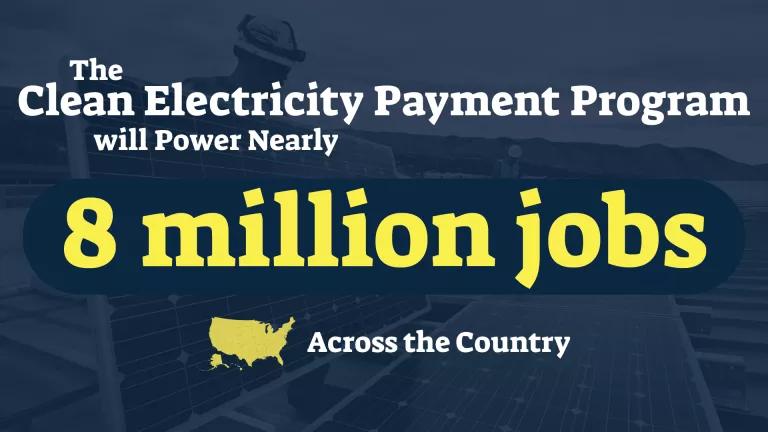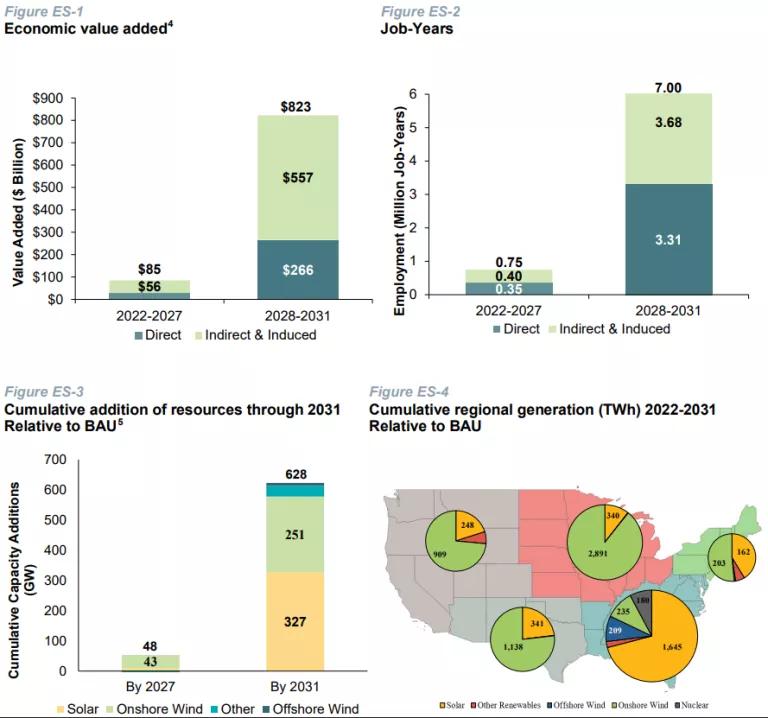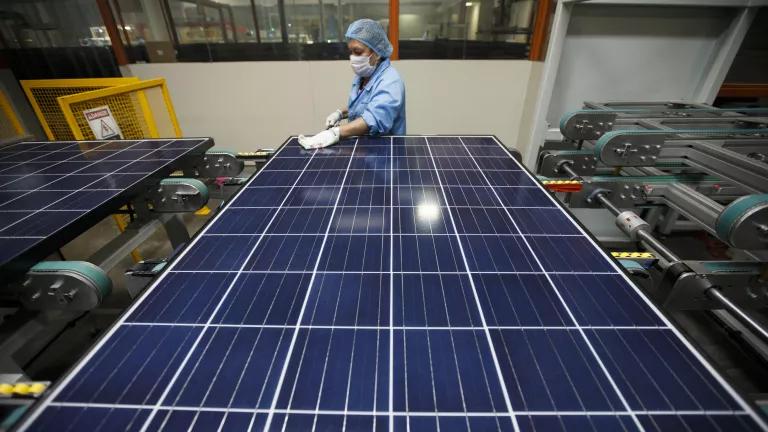80% Clean Electricity Payment Program = Enormous Job Growth
A clean energy policy like the one under consideration in Congress right now could expand the workforce by nearly 8 million jobs and generate $1 trillion in economic benefits over the next 10 years, according to new independent analysis released today.

A clean energy policy like the one under consideration in Congress right now could expand the workforce by nearly 8 million jobs and generate $1 trillion in economic benefits over the next 10 years. New analysis released today demonstrates that a well-designed Clean Electricity Payment Program (CEPP) will support a strong clean energy economy, and is vital to addressing the climate crisis.
Congress has a historic opportunity to usher in a booming clean energy economy while confronting the climate crisis, and CEPP is the cornerstone of that opportunity. Today’s analysis confirms that CEPP is critical to expanding the energy workforce and fostering economic opportunity in every region of the country. See today’s memo from NRDC and Evergreen Action for more on the economic benefits, popularity, and pollution benefits of CEPP.
What is the Clean Energy Payment Program?
CEPP is a federal investment program that was included in the budget resolution that passed both chambers of Congress in August. The program would provide incentives to local electric utilities that increase their share of clean electricity each year, as well as penalties for utilities with less clean electricity growth. The combination of a well-designed CEPP and extensions of clean energy tax credits would result in 80% clean electricity nationwide by 2030, a target supported by President Biden and Democratic leadership in Congress.
What does CEPP Deliver?
Modeling by researchers at Analysis Group found that a CEPP that achieves 80% clean energy by 2030 will lead to a net expansion of the workforce by 7.7 million jobs, driven by rapid buildout of clean energy in every part of the country. CEPP would increase clean energy capacity by more than 600 gigawatts (GW) compared to business as usual by 2030, requiring millions of construction workers, utility employees, component manufacturers, solar installers, wind technicians, and more, all across the country. The economic development fostered by CEPP would also generate more than $150 billion in added tax revenue for state, local, and federal governments.

These economic benefits are in addition to the enormous climate and public health benefits that would result from CEPP. As we’ve written before, a CEPP that helps achieve 80% clean electricity by 2030 would lead to cleaner air and a safer climate, the benefits of which exceed the costs 5 to 9 times over. And a well-funded CEPP can bring these benefits while keeping costs low for families and businesses.


